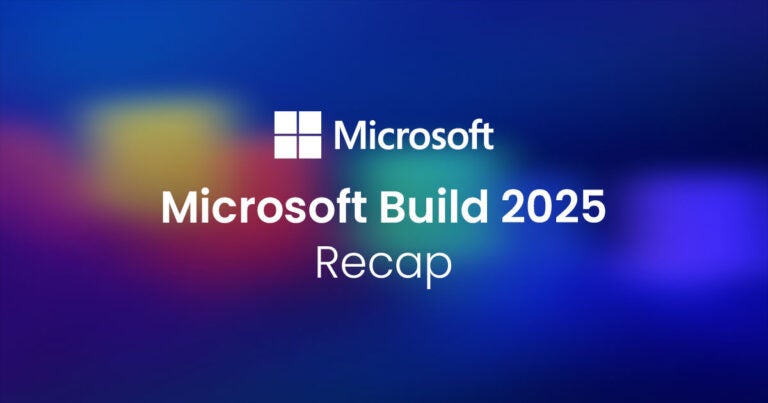Help your clients streamline their operations with AI.
These days, many company leaders or IT department heads are well aware that artificial intelligence (AI) is a technology they can regularly put to good use in one way or another. But does that mean they’re taking full advantage of such possibilities? By helping their clients adopt the AIOps automation style, managed service providers (MSPs) allow clients to bring cost-saving measures, increased efficiency, more effective management, and various other benefits to their IT operations. With AIOps in place, clients can also improve service quality and end customer satisfaction, boost engineering productivity, and reduce their operational cost.
What is AIOps?
Despite being a relatively new term — coined by Gartner in the mid-2010s — there is already general consensus on its definition: AIOps refers to the use of leading-edge AI and machine learning (ML) technologies for automation, optimization, and workflow streamlining throughout the IT department.
Gathering, processing, and analyzing data from multiple sources is foundational to any AIOps solution. Some of this big data analysis occurs in real time at the point of ingestion, but the examination of historical data is also extremely important, particularly for functions like assessing system and application performance.
In some cases, an AIOps system is the sum of multiple parts — i.e., a series of software solutions and apps — but it can also be managed through a single platform. The latter approach has become increasingly popular in an era when efficiency is prized and siloing of any kind is often discouraged. But sometimes it simply isn’t possible for every organization to achieve the level of automation it needs throughout the entire IT stack with one platform.
Why does AIOps matter?
Given the staggering amount of data that passes through modern IT departments, the need for AI isn’t particularly surprising. The functions of critical business apps and infrastructure, network traffic monitoring, cybersecurity, predictive analytics, service ticket requests, and so much more — and every piece of data associated with them — all fall under the umbrella of IT.
In addition to serving as an oversight mechanism for the aforementioned systems and managing all of the data ingestion, processing, analysis, and (where applicable) storage tasks associated with such operations, AIOps automates as many tasks as possible to limit the amount of routine work individual engineers and other key IT personnel must directly perform. To accomplish that, AIOps must leverage everything from (relatively) simple AI algorithms to the more complex functions of ML, including natural language processing (NLP), to successfully support IT staff — and, by extension, the entire business.
It’s not just IT getting into AI to automate various functions of their operations; Microsoft 365 Copilot, recently unveiled by Microsoft and made available in the Pax8 Marketplace, combines large language models (LLMs) with organizational data to help organizations improve efficiency across Microsoft applications. Other cloud vendors such as ConnectWise are bringing similar functionality to their cloud solutions, finding ways to make MSPs more efficient by automating various processes and tasks.
Notable AIOps principles
Whether managed through one platform or a number of disparate but integrated apps, AIOps frameworks typically center on the following characteristics:
Simplification through automation: As has long been stated by proponents of automation, the point isn’t to eliminate infrastructure and software engineering teams’ responsibilities. It’s to free up their time and talents for initiatives and tasks AI isn’t equipped to oversee. In the case of AIOps, such tools can handle simple or mid-level provisioning or resource requests and provide answers to routine queries.
Observability: This refers to AIOps’ performance-monitoring capabilities — offering continuous insight into data regarding both back-end and front-end applications and systems. All things being equal, this is one of AIOps’ more mundane aspects. Your IT personnel will periodically receive notifications about essential tools and see that they’re working just fine. But IT is rarely (if ever) that predictable, so observability features will alert personnel of any issue that arises so troubleshooting can begin immediately. This is particularly important for the IT departments of MSPs and their clients, as it helps both parties ensure their customer-facing apps are meeting or exceeding terms outlined in service level agreements (SLAs).
Predictive analytics: The descriptive and diagnostic tiers of analytics are certainly useful. But the ability to predict possible performance and operational outcomes for critical apps and systems has significantly greater value in an uncertain business environment. An effective AIOps setup must thus be equipped to run predictive analytics, give its operators a degree of confidence in its projections, and illuminate a path to actionable insight.
Proactivity: For some, prescriptive analytics are just as valuable (or more so) than their predictive counterpart. Both should be a part of any individual AIOps platform or framework. But a truly effective AIOps solution will not merely supply IT personnel with sound recommendations based on current and historical data. The system can also be configured to initiate automatic responses to certain triggers: For example, the AI-powered IRONSCALES solution — available through the Pax8 Marketplace — can detect and eliminate phishing emails sent to multiple employees once integrated with an organization’s email client. And the Avanan email security solution, also available through the Pax8 Marketplace, implements true machine learning to catch sophisticated attacks, catching what may be missed by built-in email client security.
Major AIOps use cases
Because organizations’ IT ecosystems can be extremely broad and require wide-ranging operations management, talking in general terms about the benefits and utility of an AIOps software solution or framework only scratches the surface. Therefore, it’s important to examine specific contextual examples in which an AIOps tool (or a collection of them) is particularly effective.
With this in mind, let’s take a look at some major use cases for AIOps.
Anomaly detection
In this context, anomaly detection refers to searching for outliers in data sets. For instance, a machine learning model within AIOps can be configured through supervised learning techniques to identify the typical state of network traffic (visualized in charts or graphs) just before network outages occurred.
The ML algorithm will not only pick up on potential issues of this kind when the relevant signs appear, but also learn over time to recognize other commonalities surrounding similar instances of prolonged downtime. The IT department will thus be considerably more prepared in the future, and can configure its AIOps setup to start switching and rerouting traffic to backup circuits faster than it might have done in the past. Over time, this will benefit internal operations management as well as the customer experience.
Adding a DNSFilter (available in the Pax8 Marketplace) to the tech stack can also help with anomaly detection by using ML to find threats that involve the DNS layer, uniquely identifying more than 60% of threats in-house.
DevOps
Many organizations’ software development teams use the DevOps model due to the resourcing flexibility it permits in the cloud. AIOps tools provide the support necessary to create that flexibility through automated and agile infrastructure management.
Also, AIOps helps ensure that developers and IT personnel always have mutual visibility and understanding of each other’s situations and priorities. This way, developers don’t overburden the infrastructure when it’s experiencing difficulties and IT doesn’t make radical adjustments to operations during critical moments in development.
Cloud migration
Businesses that have just begun migrating app workloads, operational data, and other resources to the cloud — or are doing so in a gradual, multi-phased manner — need all the support they can get.
AIOps helps smooth out these transitions by allowing IT and other key stakeholders to closely monitor resources as they transition from on-premise servers to cloud environments. This particular aspect of AIOps is especially important for organizations using hybrid cloud architecture (whether temporarily or because they intend certain resources to remain strictly on-premises).
For MSPs helping their clients move to the cloud, Pax8 provides seamless professional services automation (PSA) integrations. Implementing a PSA integration between clients and a marketplace platform is one of the biggest areas for optimization by helping manage multiple clients and solutions while consolidating billing and freeing up valuable time.
Containerization
The growing popularity of microservices architecture in app development necessitates the use of containers and the orchestration tools to manage them, such as Kubernetes and Docker. Although containerization functions within those tools are already automated, AIOps-specific automation is essential for effective monitoring of containerized resources within the greater infrastructural context.
How do you get started with AIOps?
The first essential choice of AIOps implementation is whether an organization manages it by implementing a single platform or a series of different tools. There are pros and cons either way, with the most obvious being:
- With a single solution, the company gives itself a holistic, unified view of AIOps but risks vendor lock-in (not to mention all hazards related to relying solely on one tool for an extremely important and multifaceted function).
- Using a selection of different tools, in theory, allows the organization to choose the best products for each facet of AIOps but introduces the risk of integration challenges and may ultimately be more costly.
From an MSP’s perspective, the approach you recommend will likely depend on the customer. But by any objective standard, it’s fair of you to say that most experts recommend a slow and steady approach to the technology’s implementation.
Also, if your clients want the DIY route to AIOps installation and implementation, they’ll need in-house engineers with AI and ML experience, a DevOps team, infrastructure capable of supporting AIOps software, and more. If they don’t possess these resources, it could easily lead to major challenges that would require creative solutions — and, more likely than not, outside help.
How Pax8 helps maximize AIOps value in the cloud
Because the AlOps framework brings automation to so many aspects of IT, it can certainly be useful to organizations that want to remain mostly or even entirely on-premise. But in this era of digital transformation, most companies simply can’t afford not to migrate at least some assets to the cloud, and automation is just as important in that realm (and arguably much more so).
The Pax8 Marketplace has all the cloud-based AI and automation tools you need as an MSP to give your clients a firm foundation for AIOps. To discover more of what’s possible with Pax8, schedule a demo or read our Pax8 Blog for more insights into how you can realize greater business efficiencies with tools like this and more.





